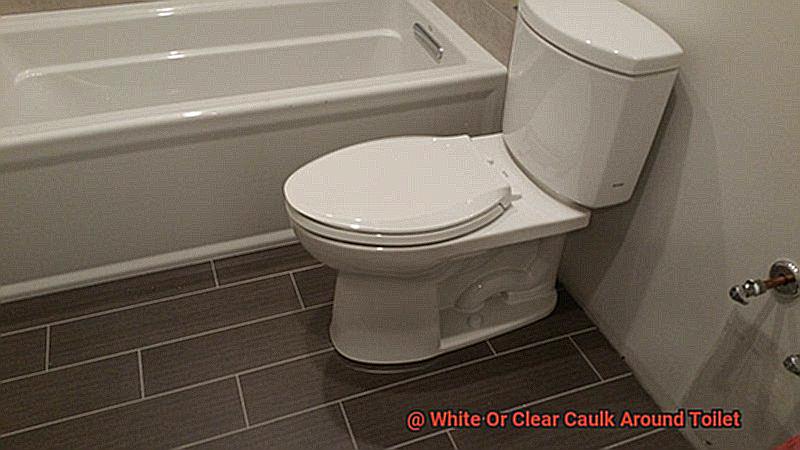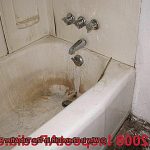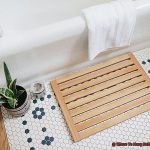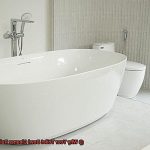Are you tired of being greeted by unpleasant odors in your bathroom?
Or have you noticed a persistent pool of water around the base of your toilet that just won’t go away? It’s time to give your toilet some much-needed attention.
Caulking around the base is a critical step in preserving your toilet, but which type of caulk should you use – white or clear? Both white and clear caulk have unique benefits and drawbacks.
Clear caulk creates a seamless look that blends with your bathroom decor, but it may not be as durable as white caulk and could lead to water seeping through over time. White caulk tends to be more effective at sealing and preventing leaks, but it may not match your toilet or surrounding colors as well.
In this blog post, we’ll dive into the pros and cons of using white vs. clear caulk around your toilet. We’ll help you determine which option is best for your bathroom while also highlighting the benefits of caulking your toilet correctly for a long-lasting seal.
Whether you’re new to home improvement or an experienced DIYer, keep reading to learn everything you need to know about using white or clear caulk around your toilet.
Contents
Advantages of White Caulk
First of all, white caulk offers a timeless and polished appearance that blends seamlessly with the white porcelain of your toilet and light-colored tiles. It gives a clean and polished finish that can enhance the overall look of your bathroom.
In contrast, clear caulk may seem out of place or unsightly in some toilets. Moreover, white caulk is more durable than clear caulk because it’s made from silicone, which is resistant to mold and mildew.
This makes it perfect for use in high-moisture areas such as toilets. Additionally, white caulk is less likely to yellow over time, which can occur with clear caulk.
When it comes to maintenance and cleaning, white caulk is also more convenient. Thanks to its opaque color, any dirt or discoloration can be quickly identified and cleaned away.
However, clear caulk can make it difficult to spot areas that require attention. Lastly, white caulk offers greater flexibility in terms of color coordination.
While clear caulk may appear versatile due to its lack of color, it can clash with certain bathroom design schemes. On the other hand, white caulk can complement any color scheme, from bold and vibrant to soft and subtle.
It provides a classic and polished look, is more durable and easier to maintain than clear caulk, and gives you greater freedom in terms of color coordination.
Drawbacks of White Caulk
While white caulk can blend in seamlessly with your toilet and surrounding tiles, it’s important to be aware of its potential drawbacks.
One major issue with white caulk is its tendency to discolor over time, especially in bathrooms with hard water. Mineral buildup can cause the caulk to turn yellow or brown, giving your bathroom an unkempt appearance even after cleaning.
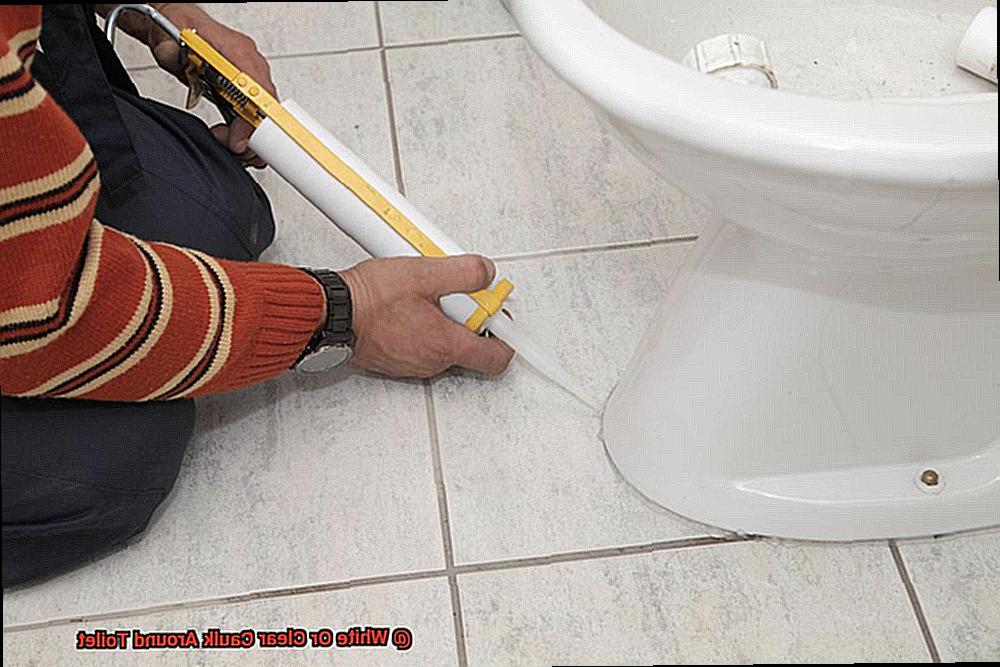
It’s like a white shirt that starts to yellow after multiple washes – not a good look. Another challenge with white caulk is achieving an even application, particularly for inexperienced DIYers.
Uneven lines can detract from the overall appearance of your bathroom and even compromise the seal, leading to leaks or water damage. Think of trying to draw a straight line without a ruler – it’s a difficult task that can result in a less than perfect finish.
Lastly, while white caulk may be ideal for classic or traditional bathroom designs, it may clash with more modern or eclectic styles. Clear caulk, on the other hand, is versatile and can match any decor without drawing attention to itself.
So, before selecting white caulk for your bathroom, consider its potential drawbacks. Discoloration over time, difficulty in achieving an even application, and lack of compatibility with various decor styles are all factors to keep in mind.
Advantages of Clear Caulk
This popular alternative to traditional white caulk offers a range of benefits, making it an ideal choice for sealing around toilets. First and foremost, clear caulk is a game-changer when it comes to aesthetics.
Unlike white caulk that fades over time due to mineral buildup, uneven application, or just plain wear and tear, clear caulk remains transparent and doesn’t discolor. It blends seamlessly with any bathroom decor or color scheme, giving your bathroom a fresh and polished look.
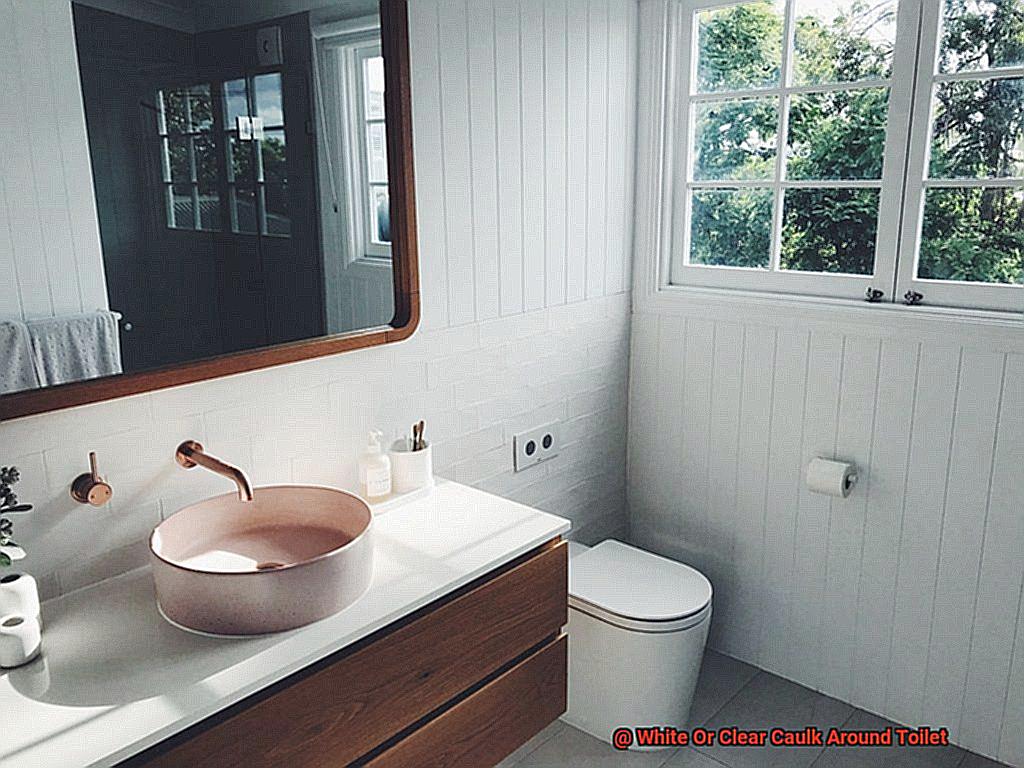
But the advantages of clear caulk don’t stop there. This type of caulk is specially formulated with greater elasticity, making it more pliable than white caulk.
Clear caulk can better withstand the movement and shifting that occurs around toilets over time.
This flexibility helps prevent cracking or splitting, which can lead to leaks and water damage, saving you money on costly repairs down the line. That’s not all.
Clear caulk is also highly resistant to moisture, thanks to special additives that help repel water and inhibit mold and mildew growth. This is especially important in a high-moisture environment like a bathroom where harmful bacteria can thrive.
Drawbacks of Clear Caulk
One of the most significant concerns with clear caulk is its tendency to yellow over time.
Exposure to sunlight, humidity, and other environmental factors can cause unsightly discoloration that can make your bathroom look dirty and unkempt. This is especially problematic in areas with high moisture content, such as around the toilet.
If you’re considering using clear caulk in these areas, it’s important to keep this drawback in mind. Another challenge with clear caulk is that it can be difficult to apply evenly.
Since it’s transparent, it can be hard to see where you’ve already applied it and where you haven’t. This can result in uneven application, which can create gaps or spaces that aren’t properly sealed.
In some cases, this can even lead to water leaks or damage. To avoid this issue, it’s important to take your time and apply the caulk carefully and methodically.
Clear caulk also tends to be less durable than white caulk over time. It may not hold up as well in areas with high moisture content or movement, such as around a bathtub or shower.
This can result in cracking or peeling, which can allow water to seep in and cause damage. If you’re looking for a long-lasting solution for your bathroom, clear caulk may not be the right choice.
Lastly, it’s worth noting that clear caulk is often more expensive than white caulk. While this may not be a major concern for everyone, those on a tight budget may want to consider the cost before opting for clear caulk.
Considerations When Choosing Between White or Clear Caulk
There are a few key considerations to keep in mind when making your decision. First, take a look at the overall aesthetic of your bathroom.
If you have white tiles and a white toilet, then white caulk will blend in seamlessly with the rest of your bathroom. But if you have a modern bathroom with clear or glass shower doors, then clear caulk will create a sleek and streamlined look that complements the overall design.
Durability is also an important factor to consider. White caulk is generally more durable and can withstand everyday wear and tear better than clear caulk, which may need to be replaced more frequently.
Finally, ease of application plays a role in your decision-making process. White caulk is easier to apply as it’s easier to see where it’s been applied and where touch-ups are needed.
Clear caulk can be more challenging for inexperienced individuals, requiring more care and precision. So, when choosing between white or clear caulk around your toilet, consider the appearance of your bathroom, durability, and ease of application.
zzhdin_tnfk” >
Conclusion
In conclusion, the decision between using white or clear caulk around your toilet can be a challenging one.
Each option has its own set of advantages and disadvantages that should be carefully considered before making a final choice. The classic look of white caulk seamlessly blends with light-colored tiles and porcelain toilets while also being durable and easy to maintain.
However, it may not suit modern or eclectic bathroom designs and will eventually fade over time. On the other hand, clear caulk offers a sleek and contemporary appearance that complements any bathroom style or color scheme.
It is also highly resistant to humidity and more pliable than white caulk. However, it can be challenging to apply evenly and will also fade with time.
When deciding between white or clear caulk for your toilet, consider factors such as appearance, durability, and ease of application. Ultimately, the best choice for your bathroom will depend on your individual preferences and needs.
Properly caulking around the base of your toilet is essential in ensuring its longevity and preventing leaks or water damage.

